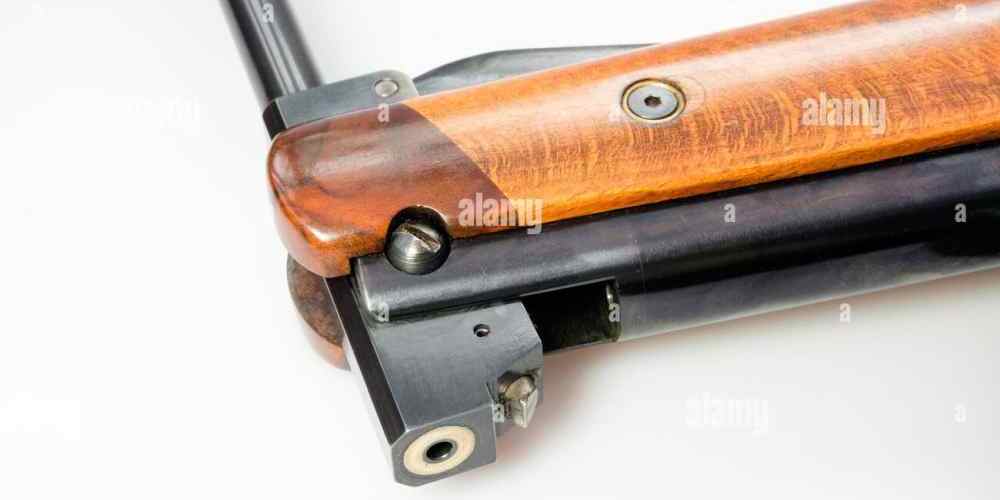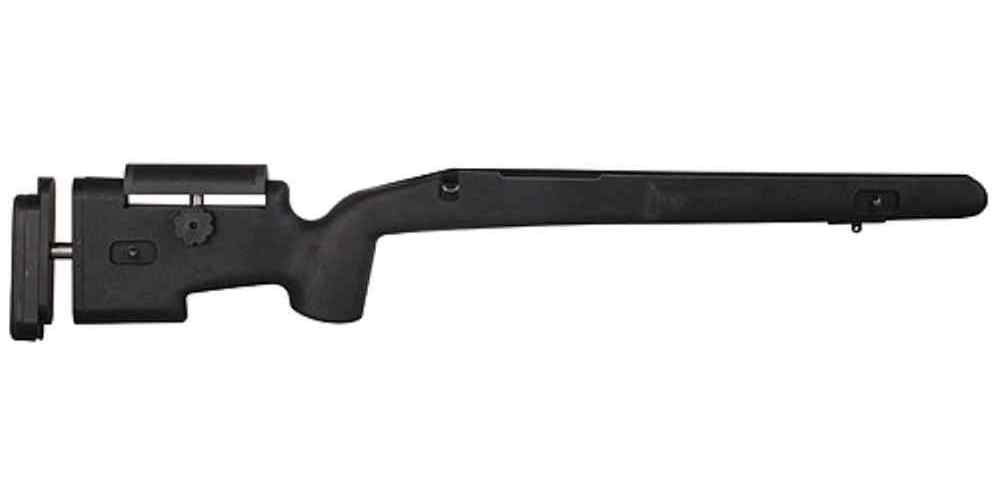“Choose sustainable materials for a greener future.”
Sustainability of Wood Rifle Stocks
When it comes to choosing a rifle stock material, there are several factors to consider, including durability, weight, and aesthetics. One often overlooked factor is the environmental impact of the material. In this article, we will explore the sustainability of wood rifle stocks and how they compare to other materials.
Wood has been a popular choice for rifle stocks for centuries due to its natural beauty and durability. However, the environmental impact of using wood as a rifle stock material is a topic of concern for many conservationists. The main issue with using wood is deforestation, which can lead to habitat destruction and loss of biodiversity.
To address these concerns, many manufacturers are now using sustainably sourced wood for their rifle stocks. This means that the wood is harvested from forests that are managed in a way that ensures the long-term health of the ecosystem. Sustainable forestry practices include replanting trees, protecting wildlife habitats, and minimizing the use of chemicals.
Another factor to consider when evaluating the sustainability of wood rifle stocks is the carbon footprint of the material. Wood is a renewable resource, which means that it can be replenished over time. In addition, trees absorb carbon dioxide from the atmosphere, helping to mitigate climate change. This makes wood a more environmentally friendly option compared to synthetic materials like plastic or fiberglass.
In terms of durability, wood rifle stocks are known for their strength and longevity. With proper care, a high-quality wood stock can last for generations, making it a sustainable choice in the long run. In contrast, synthetic materials may degrade over time and end up in landfills, contributing to environmental pollution.
From a weight perspective, wood rifle stocks are generally heavier than synthetic materials. While this may be a drawback for some shooters who prefer a lighter firearm, the added weight can actually improve stability and accuracy. Additionally, the weight of the rifle stock can be offset by using lightweight materials for other components of the firearm.
In conclusion, wood rifle stocks can be a sustainable choice for environmentally conscious shooters. By opting for sustainably sourced wood, you can enjoy the natural beauty and durability of wood while minimizing your impact on the environment. With proper care and maintenance, a wood rifle stock can last for years, making it a worthwhile investment for both your shooting experience and the planet. So next time you’re in the market for a new rifle stock, consider choosing wood for a more sustainable shooting experience.
Environmental Effects of Plastic Rifle Stocks
When it comes to choosing a rifle stock material, many shooters focus on factors such as weight, durability, and aesthetics. However, one important consideration that is often overlooked is the environmental impact of the material used. In this article, we will explore the environmental effects of plastic rifle stocks and why shooters should consider more sustainable alternatives.

Plastic rifle stocks are a popular choice among shooters due to their affordability and lightweight properties. However, the production of plastic materials, particularly those derived from fossil fuels, has a significant impact on the environment. The extraction and processing of crude oil to create plastic releases harmful greenhouse gases into the atmosphere, contributing to climate change. Additionally, the disposal of plastic waste poses a major environmental threat, as it can take hundreds of years to decompose in landfills.
Furthermore, the manufacturing process of plastic rifle stocks involves the use of toxic chemicals and solvents that can leach into the soil and water supply, contaminating ecosystems and posing a risk to human health. These environmental hazards highlight the need for shooters to consider more sustainable alternatives when choosing a rifle stock material.
One eco-friendly option to consider is wood, which has been used for centuries in the production of rifle stocks. Wood is a renewable resource that can be sustainably harvested from responsibly managed forests. Unlike plastic, wood is biodegradable and can be easily recycled or repurposed at the end of its lifespan, reducing waste and environmental impact.
Another environmentally friendly alternative to plastic rifle stocks is composite materials, such as fiberglass or carbon fiber. These materials are lightweight, durable, and can be recycled at the end of their lifespan. Additionally, composite materials can be manufactured using renewable resources, such as plant-based fibers, further reducing their environmental impact.
In addition to considering the environmental impact of rifle stock materials, shooters should also be mindful of the energy consumption and emissions associated with the production and transportation of these materials. Choosing locally sourced materials and supporting manufacturers with sustainable practices can help reduce the carbon footprint of rifle stock production.
Transitioning to more sustainable rifle stock materials is not only beneficial for the environment but can also improve the performance and longevity of your firearm. Wood and composite materials offer superior strength and stability compared to plastic, resulting in better accuracy and recoil control. By choosing eco-friendly rifle stock materials, shooters can enjoy the benefits of a high-quality firearm while minimizing their environmental impact.
In conclusion, the environmental impact of rifle stock materials is an important consideration for shooters who are looking to make more sustainable choices. Plastic rifle stocks have a significant negative impact on the environment, from the extraction of fossil fuels to the disposal of toxic waste. By choosing wood or composite materials, shooters can reduce their carbon footprint and support more environmentally friendly practices in the firearms industry. Making the switch to eco-friendly rifle stock materials is a small but significant step towards a more sustainable future for shooters and the planet.
Carbon Footprint of Aluminum Rifle Stocks
When it comes to choosing a rifle stock material, many factors come into play. One of the most important considerations is the environmental impact of the material. In this article, we will explore the carbon footprint of aluminum rifle stocks and how they compare to other materials.
Aluminum is a popular choice for rifle stocks due to its lightweight and durable properties. However, the production of aluminum is energy-intensive and can have a significant impact on the environment. The process of extracting aluminum from bauxite ore requires a large amount of electricity, which is often generated from fossil fuels. This results in the release of greenhouse gases such as carbon dioxide into the atmosphere.
In addition to the energy-intensive production process, aluminum also has a high carbon footprint due to its transportation. Aluminum is a lightweight material, which means that it can be easily transported over long distances. However, the transportation of aluminum from the production site to the manufacturer and then to the end user requires the use of trucks, ships, and other vehicles that run on fossil fuels. This further contributes to the carbon footprint of aluminum rifle stocks.
Despite its high carbon footprint, aluminum does have some environmental benefits. Aluminum is highly recyclable, which means that it can be melted down and reused to create new products. This helps to reduce the demand for new aluminum production and minimizes the environmental impact of the material. Additionally, aluminum is corrosion-resistant, which means that it has a long lifespan and can be used for many years before needing to be replaced.
When comparing the carbon footprint of aluminum rifle stocks to other materials, such as wood or synthetic materials, aluminum generally has a higher impact on the environment. Wood is a renewable resource that can be sustainably harvested, while synthetic materials can be manufactured using less energy-intensive processes. However, both wood and synthetic materials have their own environmental drawbacks, such as deforestation and the use of petrochemicals.
In conclusion, the carbon footprint of aluminum rifle stocks is significant due to the energy-intensive production process and transportation requirements. While aluminum does have some environmental benefits, such as recyclability and durability, it is important for consumers to consider the environmental impact of their purchasing decisions. By choosing materials with lower carbon footprints, such as wood or synthetic materials, shooters can help reduce their impact on the environment and promote sustainability in the firearms industry.
Eco-Friendly Alternatives for Rifle Stock Materials
When it comes to choosing materials for rifle stocks, it’s important to consider the environmental impact of your decision. Traditional materials like wood and plastic can have negative effects on the environment, from deforestation to pollution. Fortunately, there are eco-friendly alternatives available that can help reduce your carbon footprint and protect the planet for future generations.
One popular eco-friendly option for rifle stocks is bamboo. Bamboo is a fast-growing, renewable resource that can be harvested without causing harm to the environment. It is also incredibly strong and durable, making it an excellent choice for rifle stocks. In addition, bamboo has a unique aesthetic appeal that can give your rifle a distinctive look.
Another eco-friendly material for rifle stocks is recycled plastic. By using recycled plastic, you can help reduce the amount of waste that ends up in landfills and oceans. Recycled plastic can be just as strong and durable as traditional plastic, making it a viable option for rifle stocks. Additionally, using recycled plastic can help reduce the demand for new plastic production, which can help lower greenhouse gas emissions.
For those looking for a more natural option, cork is a great choice for rifle stocks. Cork is harvested from the bark of cork oak trees, which can be done without harming the tree. Cork is lightweight, durable, and has natural shock-absorbing properties, making it an excellent material for rifle stocks. In addition, cork is biodegradable, so it won’t contribute to environmental pollution when it reaches the end of its lifespan.
One innovative eco-friendly material for rifle stocks is hemp. Hemp is a versatile plant that can be used to make a wide range of products, including rifle stocks. Hemp is a fast-growing crop that requires minimal water and pesticides to grow, making it a sustainable choice for environmentally conscious shooters. Hemp rifle stocks are lightweight, strong, and have a unique texture that sets them apart from traditional materials.
In conclusion, there are several eco-friendly alternatives available for rifle stock materials that can help reduce your environmental impact. From bamboo to recycled plastic to cork to hemp, there are plenty of options to choose from that are both sustainable and durable. By choosing eco-friendly materials for your rifle stock, you can help protect the planet while still enjoying your favorite outdoor activities. So next time you’re in the market for a new rifle stock, consider opting for one of these environmentally friendly options.
Impact of Rifle Stock Materials on Wildlife Habitat
When it comes to choosing a rifle stock material, many hunters and shooters focus on factors such as durability, weight, and aesthetics. However, one important consideration that is often overlooked is the environmental impact of the materials used in rifle stocks. The choice of material can have a significant impact on wildlife habitat and ecosystems, making it crucial to consider the environmental implications of your rifle stock selection.
One of the most common materials used in rifle stocks is wood. While wood is a natural and renewable resource, the logging industry can have a detrimental impact on wildlife habitat. Clear-cutting forests to harvest wood for rifle stocks can destroy crucial habitats for a variety of species, including birds, mammals, and insects. Additionally, the use of pesticides and herbicides in forestry operations can further harm wildlife and pollute water sources.
Another popular material for rifle stocks is synthetic polymers, such as fiberglass or carbon fiber. While these materials are durable and lightweight, they are derived from non-renewable resources and can have a significant carbon footprint. The production of synthetic polymers often involves the use of fossil fuels and toxic chemicals, which can contribute to air and water pollution. Additionally, the disposal of synthetic materials at the end of their lifespan can further harm the environment.
In recent years, there has been a growing interest in alternative materials for rifle stocks that are more environmentally friendly. One promising option is bio-based polymers, which are derived from renewable resources such as plant-based oils or starches. These materials offer the durability and performance of synthetic polymers while reducing the environmental impact of rifle stock production. Bio-based polymers are biodegradable and can be composted at the end of their lifespan, making them a more sustainable choice for environmentally conscious shooters.
Another eco-friendly option for rifle stocks is recycled materials. By using recycled plastics or composites in rifle stock production, manufacturers can reduce the demand for virgin materials and divert waste from landfills. Recycled materials offer the same performance and durability as new materials while reducing the environmental impact of rifle stock production. Additionally, using recycled materials can help to conserve natural resources and reduce greenhouse gas emissions.
Transitioning to more sustainable rifle stock materials can have a positive impact on wildlife habitat and ecosystems. By choosing materials that are renewable, biodegradable, or recycled, shooters can help to reduce the environmental footprint of their equipment. Additionally, supporting manufacturers that prioritize sustainability can encourage the industry to adopt more eco-friendly practices and reduce its overall impact on the environment.
In conclusion, the choice of rifle stock material can have a significant impact on wildlife habitat and ecosystems. By considering the environmental implications of different materials and opting for more sustainable options, shooters can help to minimize their impact on the environment. Whether it’s choosing bio-based polymers, recycled materials, or responsibly sourced wood, every decision counts when it comes to protecting wildlife and preserving our natural resources. Let’s aim for a greener future for our rifles and our planet.





